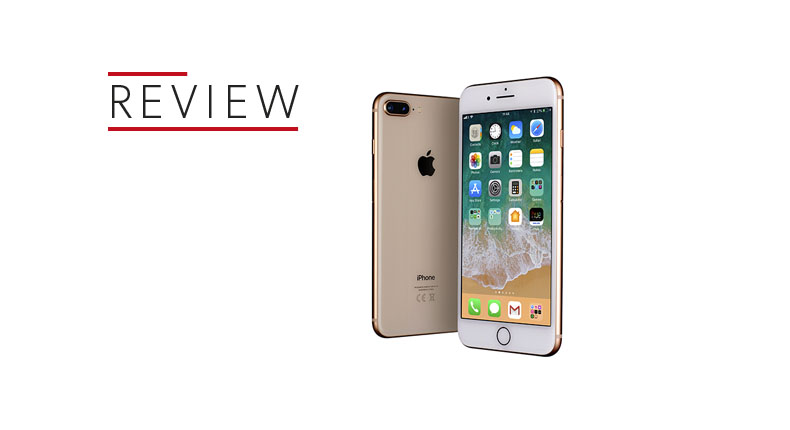What Hi-Fi? Verdict
Small upgrades can make a big difference, and Apple’s largest phone now leads the pack
Pros
- +
Great screen
- +
Superb dual-lens cameras
- +
Solid performance
- +
Good build quality
- +
Strong battery life
Cons
- -
Large, dated design
- -
No headphone jack
Why you can trust What Hi-Fi?
A whole decade of the iPhone is a milestone worth celebrating. And yet, the launch of the iPhone 8 family feels like one of the most low-key in Apple's history. No queues, no backorders, very little fuss.
But despite its familiar design and less-than-impressive spec sheet, the iPhone 8 Plus is still capable of some pleasant surprises. So much so, it could be the Apple phone to buy this year.
MORE: Apple launches flagship iPhone X, mentions iPhone 8 and 8 Plus too
Build
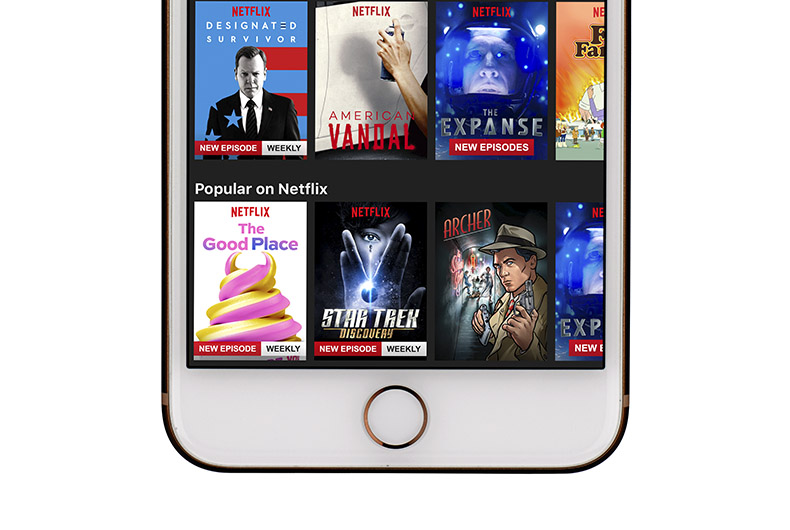
The design of the 8 Plus is still frustratingly big, even when compared to models with larger screens. The chunky bezels at the top and bottom of the screen are largely to blame - they make the 8 Plus a very large phone indeed.
This makes one-handed use pretty tricky. While you can double tap the home button to pull any icons from the top of the screen down, you’ll have to perform some serious thumb yoga to get to the far side of the screen when typing.
That’s not helped by the fact the iPhone 8 Plus is pretty weighty too – 14g more than the 7 Plus it replaces. It feels more solid, but can feel a little uncomfortable after longer use.
What this larger design does allow, though, is the iPhone’s home-button-with-TouchID-fingerprint-scanner to stay put (the iPhone X ditches it entirely). Its location is convenient for security and for Apple Pay, and it is as responsive and reliable as ever.
MORE: Apple iPhone X hands-on review
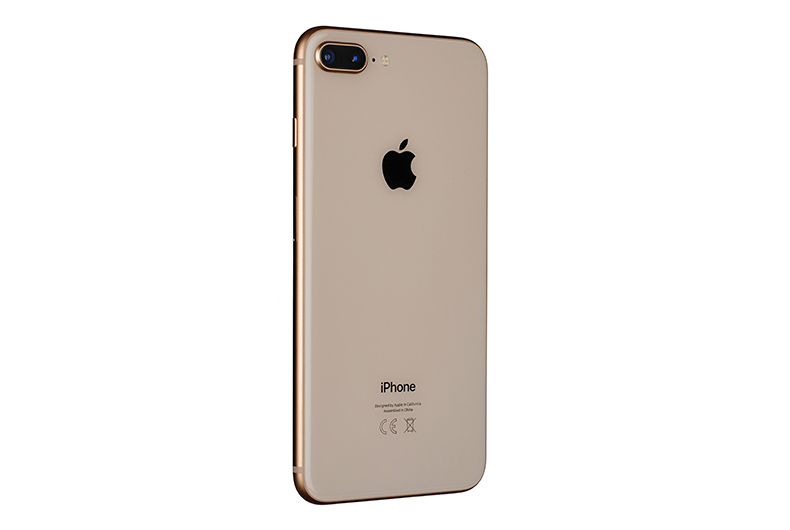
It’s only when you turn the phone over you start to see 2017’s design flourishes. A new glass back replaces aluminium to allow for Qi-standard wireless charging, while the metal stays on around the edges to help with grip.
Apple says its glass is the most durable used in any smartphone - but we would still recommend a case, as it will slip off any surface that isn’t perfectly flat.
Colours have been simplified this year, with the choice of the more uniform Space Grey or Silver alongside a slightly fancier Gold. That last comes with a creamy-coloured back panel and a smart rose-gold aluminium trim.
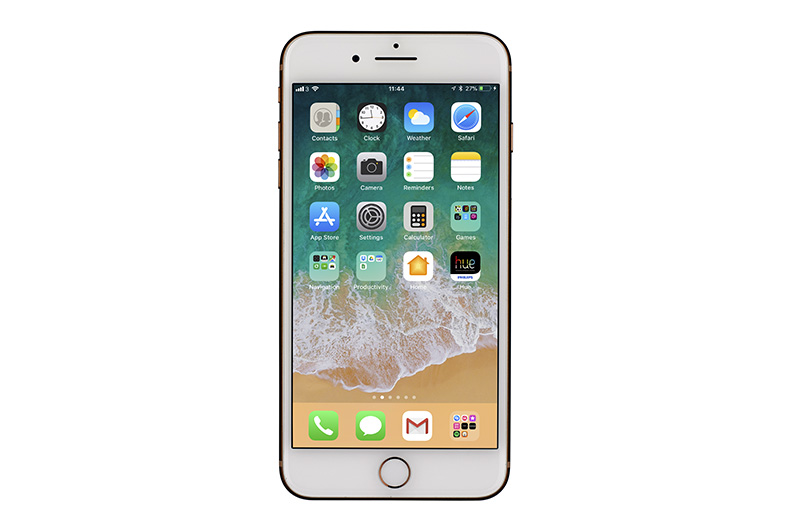
Waterproofing returns, at an IP67 rating. That might not be quite as high as some of the competition, but it’s enough for a dunk of up to a metre for up to 30 minutes. That should to cover most accidents but, like most phones, it doesn’t cover seawater.
As with all new iPhones, the 8 Plus is delivered with Apple’s latest OS built in. iOS has had a bit of a design overhaul - and not only is 11 bolder, it’s smarter too.
This includes a better Control Centre, improved file management abilities and augmented reality know-how. iPad users will probably benefit the most from the update, but it’s still a great addition to the 8 Plus.
Screen
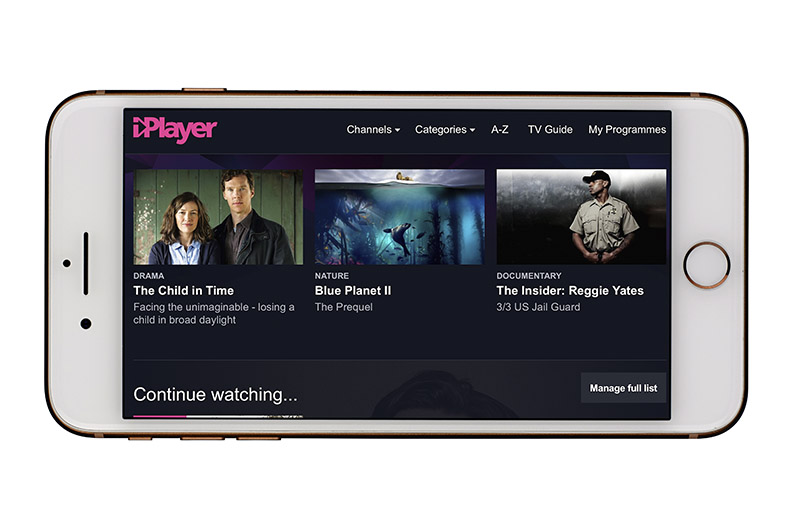
The iPhone 8 Plus’s 5.5in IPS display is exactly the same as the 7 Plus, with a 1920 x 1080 Full HD resolution. But don’t be disheartened. While it continues to trail its competition on paper, it remains one of the best in use.
It’s easy to admire the edge-to-edge video experience of the Samsung Galaxy S8+ but, when it comes to outright colour balance and insight, the iPhone 8 Plus is the more talented device.
Outlines are crisp, textures are well defined and finer details are pored over. Every pixel of the Full HD resolution is pulling its weight here, and it shows.
It’s a similar story with colour, which is really well considered. It’s a natural balance, but with a touch more richness to bolder colours than before.
MORE: Samsung Galaxy S8+ review
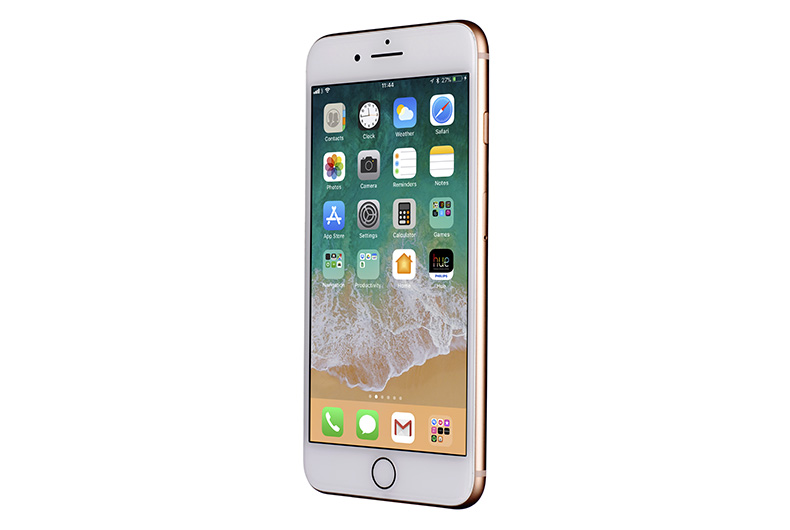
Skin-tones are particularly well handled, and contrast is pretty impressive too - darker scenes come close to the AMOLED blacks of the S8+.
Apple has borrowed the True Tone technology from the most recent iPad Pro for use here, which adjusts the display based on ambient light conditions. You’re encouraged to opt in to it at set-up, and given the chance to A/B the two settings in the process.
Switching it on takes the blue light out of the display and warms things up, making the screen look subtler and more natural. Even better, it doesn’t seem to affect the colour balance adversely at any point.
After a few days of having True Tone switched on, we try switching back. It looks a touch artificial by comparison.
MORE: Apple iPad Pro 10.5in review
Sound
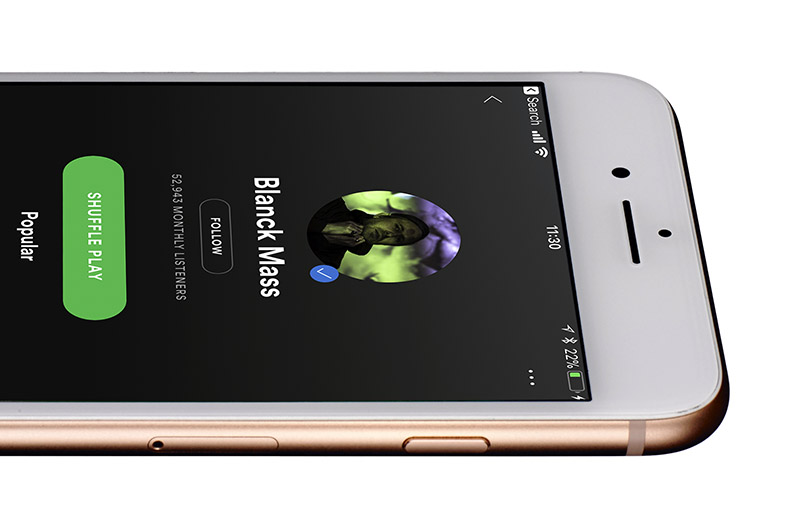
Apple has never been one to make much of a fuss over its audio performance, and yet over the years it has generally been the one to beat. That’s no different in the iPhone 8 Plus.
There’s still no hi-res support, and despite tech specs listing that this would be the first iPhone to support FLAC (via Apple’s new My Files app), we couldn’t get any of our CD-quality FLAC files to play.
So we stick with WAV for now, and the Apple’s performance is as confident as ever. The bass is rich and detailed, midrange subtle and expressive, and treble superbly controlled.
Violins aren’t the easiest instrument to recreate faithfully at this level but the 8 Plus does an excellent job, with texture and insight in every stroke of the bow.
MORE: Apple adds FLAC support for iPhone 7, 8 and X
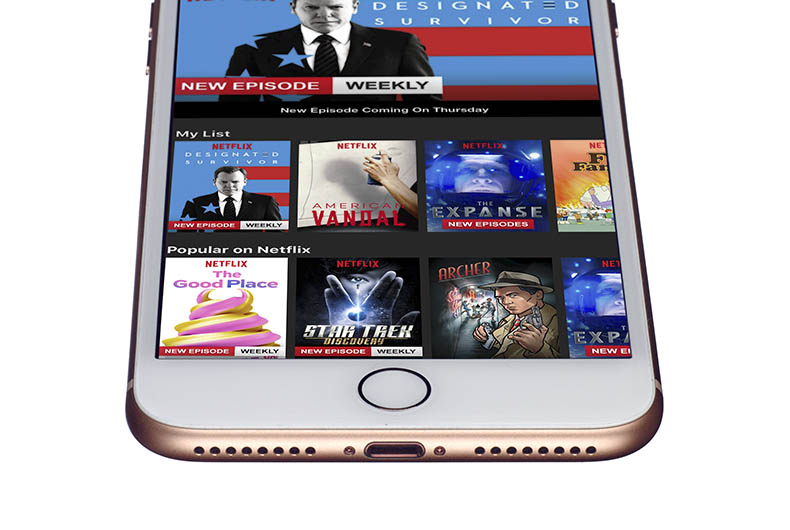
As ever though, it’s the supreme timing and ability to weave all the various elements of a track together so cohesively that really makes the iPhone 8 Plus stand out from its competition.
It’s a solid, dynamic and engaging performance for music on the go – an experience that is only topped by dedicated devices.
Yes, the headphone jack is still missing and is, quite frankly, unlikely to return. Understandably that’s going to be a deal-breaker for some - but you do get an adapter in the box and stable wireless performance over Bluetooth.
The on-board stereo speakers have seen a boost too, and will now go 25 per cent louder. It’s a noticeable increase, and if you’re intent on going headphone-free,you’ll get a clearer, weightier and more rounded sound than before.
MORE: Apple iPhone 8 hands-on review
Features
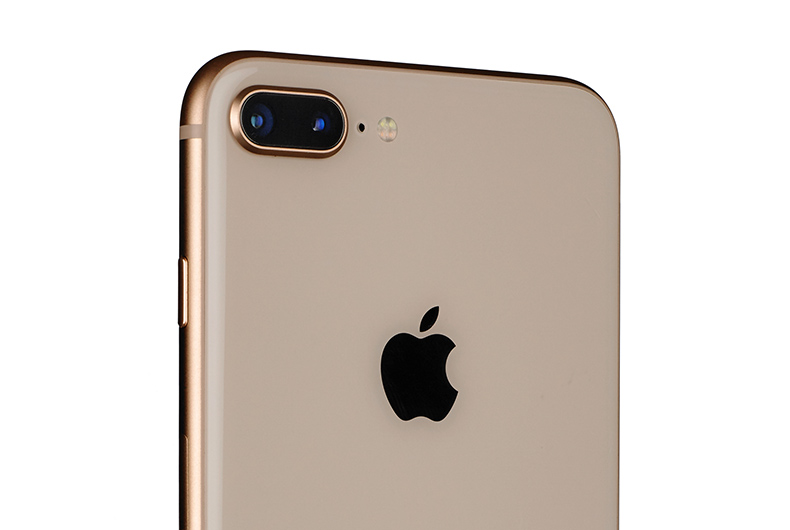
The improved camera on the iPhone Plus models has made a convincing argument for buying the bigger handset over the regular iPhone for a few years now.
In particular, last year’s 7 Plus introduced the dual-lens camera set-up, and it makes a reappearance here - but with some well-considered improvements.
Not a lot has changed at first glance – there’s still one wide-angle lens with f/1.8 aperture and one telephoto lens for zooming, with f/2.8 aperture.
But Apple has also fitted a larger, faster sensor for better low-light photography, a new colour filter for more saturated colours and ‘deeper pixels’ for improved dynamic range.
MORE: Apple iPhone 7 Plus review
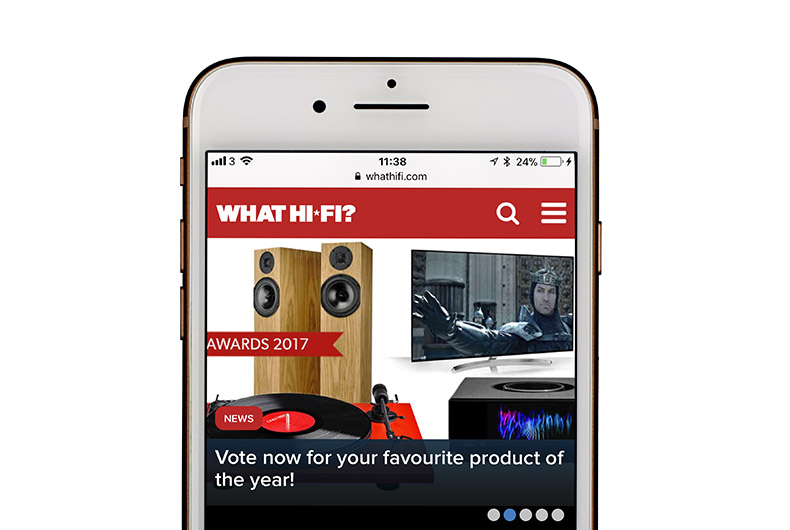
Optical image stabilisation returns on the main camera again as well, for steadier shots and more stable video footage.
Bring all of this together and you’ve got one of the most talented smartphone cameras we’ve tested. In good light, photos are bright and well exposed, with loads of detail and excellent handling of colour.
The now always-on HDR mode does a great job of tackling more challenging lighting conditions, preventing bleached-out skies and balancing light and dark areas of a photo well.
Low-light shots see improvement too, and darker scenes are suitably brightened, with minimal noise and just a touch of smoothing.
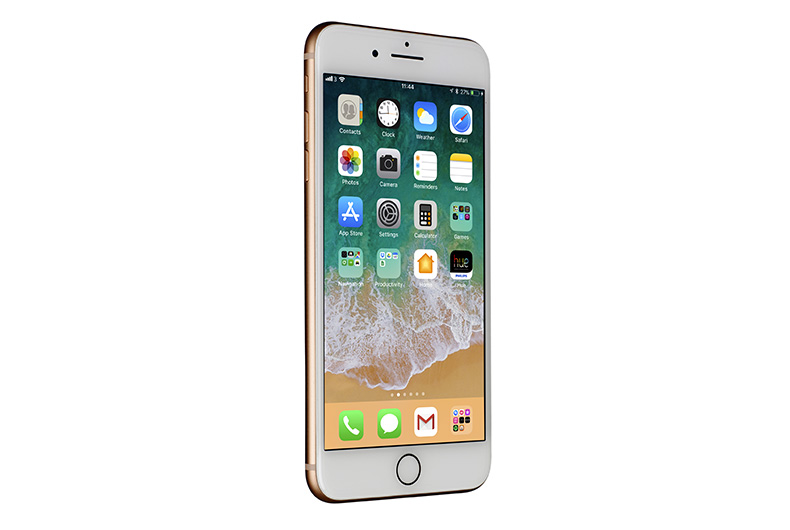
The telephoto lens is able to punch in on your subject without losing detail. Its smaller aperture means you’ll probably want to steer clear of it for lower-light snaps, but it’s just as talented as the wide-angle lens in good light. It focuses quickly and frames the subject in the centre of your snap.
The Portrait mode introduced last year is back on the iPhone 8 Plus, with its fake bokeh effect much improved. It’s even more artsy this year thanks to the new Portrait Lighting effects.
This works by using both cameras to create a map of the contours of your face, then apply a lighting effect to the areas that would catch the light.
Performance
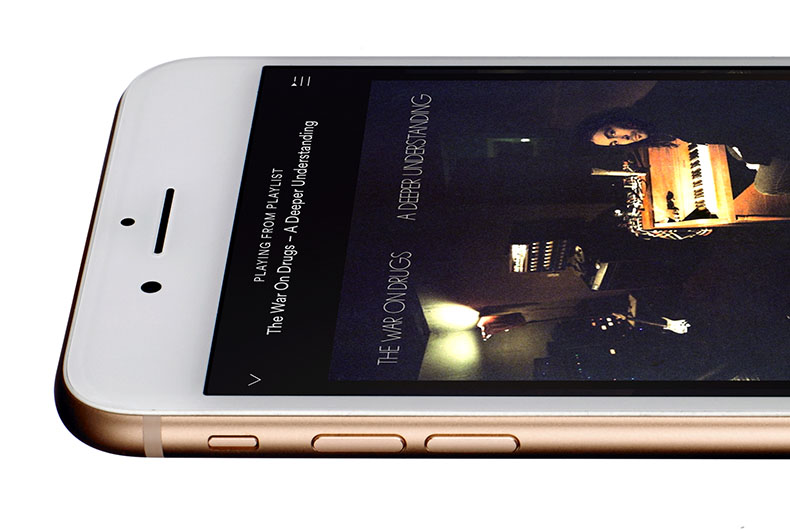
Apple’s A11 Bionic chip is the brains behind this whole operation, and keeps things running smoothly. The boost in power and improved graphics chip will no doubt be handy for the new generation of augmented-reality games.
For day-to-day use, it has power to spare - though it does get a little warm when really pushed.
The battery is a pleasant surprise too, and even for power users it will easily see you through the day with juice to spare. Anyone upgrading from the 6S or below, or any of the smaller iPhones, will notice the difference.
MORE: A brief history of the Apple iPhone
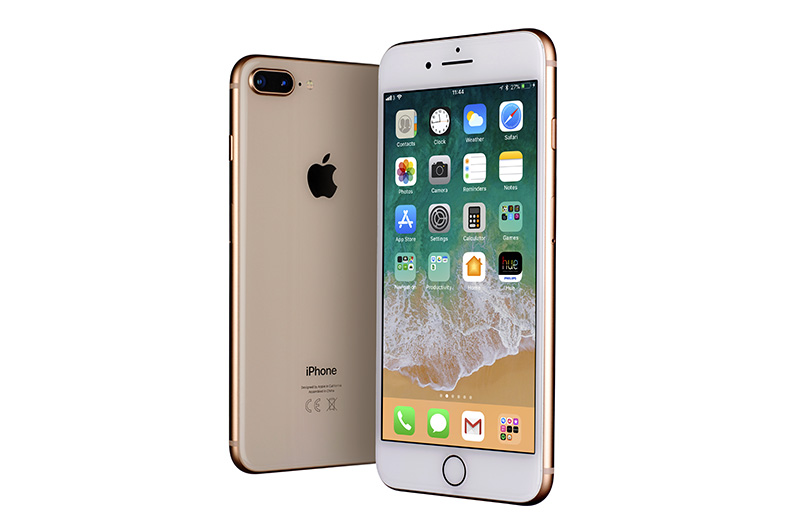
You’ll need to buy your own wireless charger to access that long-life functionality, but at least it's possible using the Qi charging standard anything proprietary.
Apple is, of course, working on its own - but for now it recommends efforts from Belkin and Mophie through its store.
Finally, Apple has introduced fast charging here - but you’ll have to pay through the nose to get it. Buy a USB-C to Lightning cable and a USB-C power adapter for £75 and you’ll be able to get your battery to half power in 30 minutes. That's something that would usually take nearer an hour.
MORE: Best smartphones 2017
Verdict
There’s no doubt the iPhone 8 Plus borrows a lot of its big ideas from last year’s 7 Plus. However, it puts in the legwork, with a few new ideas, to make the whole experience better all round.
That means an improved screen, one of the best cameras we’ve tested, slicker performance and wireless charging. Even its battery life is enviable – a rare boast for an iPhone.
Its audio might not have seen any huge jump since last year, but it speaks volumes that it still comes out on top against its hi-res-capable rivals.
If you can handle its rather chunky form, the ability to bring together a few subtle upgrades to create a much better handset is impressive to say the least.
Owners of the 7 Plus may want to hang on for the X, or even next year’s model, but anyone upgrading from before the 7, or from the smaller design, will find a lot to love here.
See all our Apple reviews
What Hi-Fi?, founded in 1976, is the world's leading independent guide to buying and owning hi-fi and home entertainment products. Our comprehensive tests help you buy the very best for your money, with our advice sections giving you step-by-step information on how to get even more from your music and movies. Everything is tested by our dedicated team of in-house reviewers in our custom-built test rooms in London, Reading and Bath. Our coveted five-star rating and Awards are recognised all over the world as the ultimate seal of approval, so you can buy with absolute confidence.
